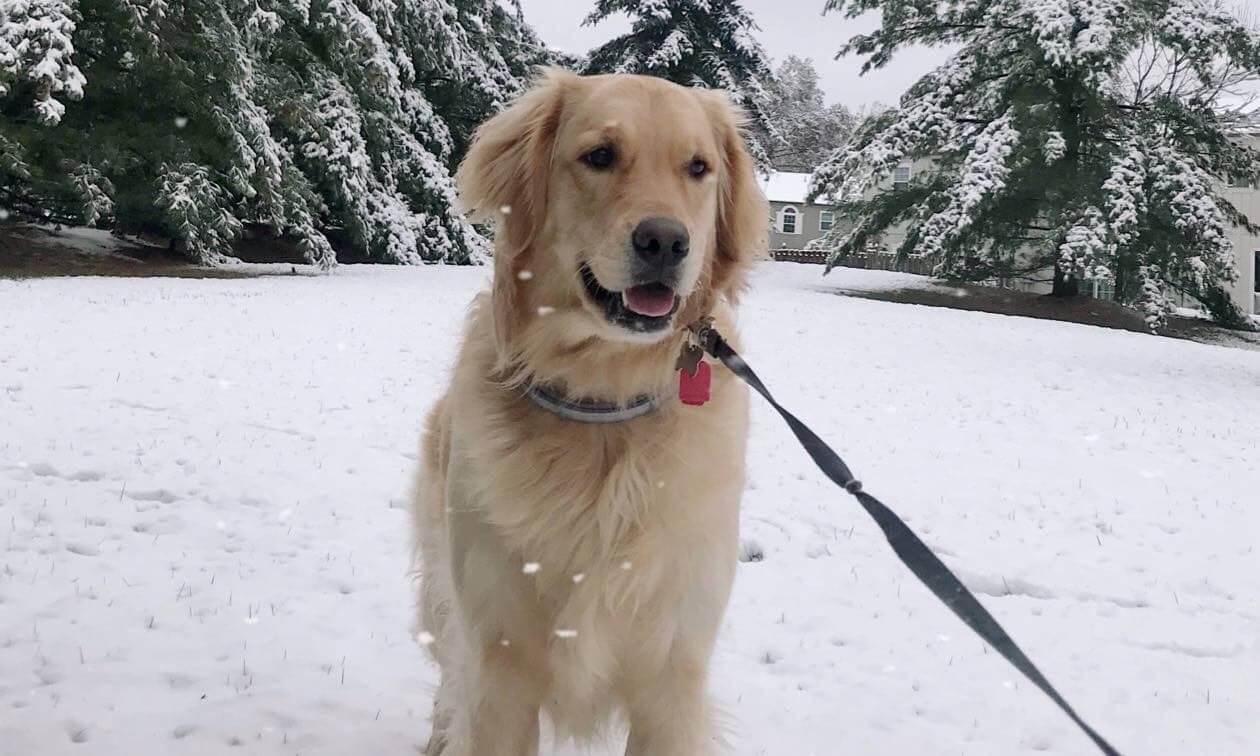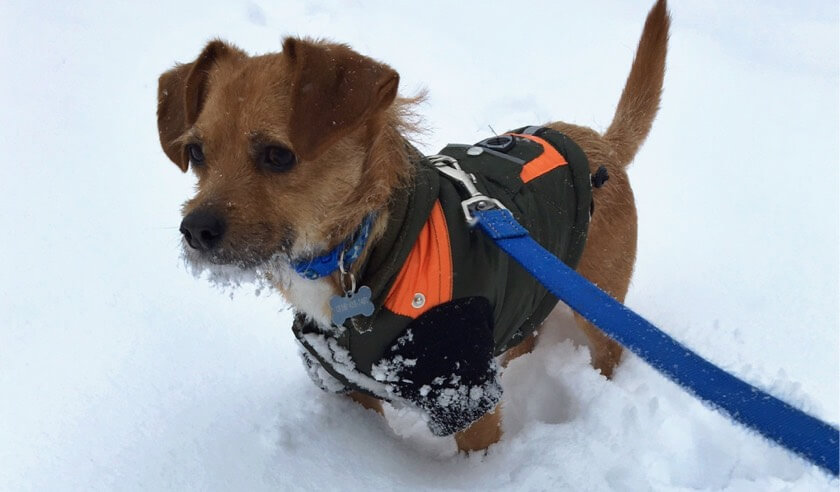Many dogs love to play in a winter wonderland, leaping along in the snow or catching falling snowflakes. Before you spend time outdoors in the snow, you'll want to take a few precautions. Here are some important tips to ensure your dog has fun and stays safe while enjoying the snow.
What Dogs Should Wear in The Snow
Some dog breeds thrive in snowy climates, like Alaskan Malamutes, Siberian Huskies, and Samoyeds. Their thick fur keeps them warm and dry. But the lack of a thick double-coat doesn't mean your dog needs to miss out on the fun — there are a variety of cold weather clothes and protective measures for dogs that can keep them cozy and warm.
- Dog Jackets and Sweaters:
Depending on the thickness of their fur, your dog may be okay with just a single layer of clothing when playing in the snow or on a walk during cold weather. Make sure their clothing is waterproof or at least water-resistant. To increase the warmth factor, layer a fleece or dog sweater underneath a waterproof dog coat. Check your dog's clothes intermittently outdoors to ensure they aren't wet from melted snow (especially in the belly area). - Dog Booties:
Protect your dog's paws from frostbite and winter hazards like deicers or sidewalk salt by having them wear winter boots. Choose boots with good traction to prevent slipping and waterproof materials so paws don't get soaking wet. Not every dog loves wearing boots, so take some time to help them acclimate before heading out for a walk in the snow. - Paw Wax:
If booties are a no-go for your dog or they keep falling off, another option is to apply a layer of paw wax before heading outdoors. This creates a barrier between the ground and their paw pads and fur to prevent ice and snow from clumping up between the toes and pads.
How Long Can Your Dog Play in The Snow?
Some dogs just don't want to come inside if there are snow drifts to play in. It's important to keep a close eye on your dog to make sure they aren't getting too cold and that they're staying hydrated. How long your dog plays in the snow also depends on the temperature outside. A good rule of thumb is no more than 30 minutes at a time. It's helpful to acclimate them to the cold slowly. You should start with short sessions and gradually increase the time they spend outside.
Puppies and senior dogs can't regulate their body temperature as well as adult dogs. For this reason, they should spend less time in the snow, and warm waterproof dog jackets are recommended.
A small dog is much closer to the cold ground (or may be up to their shoulders in the snow) and can get colder faster than medium and large dogs, so have them wear their snow gear. To make it easier to get around, consider shoveling pathways so they aren't plowing through the snow themselves.
Even if your dog is only outside for a few minutes, watch closely for shivering. Never force them to stay outside if they want to head indoors where it's warm.
Is It Okay for Dogs to Eat Snow?
Small amounts of clean snow are safe for your dog to eat, but it's important to closely monitor how much they're consuming and where it came from to be sure it's clean.
Consuming too much snow can cause your dog's body temperature to lower and result in hypothermia. It can also cause gastrointestinal upset such as abdominal pain, vomiting, and/or diarrhea.
Consuming "dirty" snow, like that near streets, sidewalks, or other public areas, may be contaminated with harmful chemicals that can be toxic or cause gastrointestinal upset. Snow can also hide dangers such as sticks, rocks, or other debris that can harm your pet if ingested.
Winter Hazards To Watch Out For
There are a few common cold weather products dogs can inadvertently walk through. Since they lick their paws to clean them, they risk ingesting these dangerous products.
- Antifreeze:
If you notice a blue or green-colored substance on the ground or in the snow, it's likely antifreeze. This toxic material tastes sweet, which is why so many dogs like to eat it. If you see your dog consuming antifreeze or suspect they may have, contact a veterinarian immediately! Even very small amounts can be fatal. Antifreeze is often found on driveways, sidewalks, and near cars. It is best to avoid those areas with your dog when possible. - Deicers/Sidewalk Salt:
If you see your dog consume chemical deicers or sidewalk salt, contact your veterinarian. Some are toxic and potentially fatal if ingested. - Frostbite:
When dogs are exposed to very low temperatures, or even average cold for extended periods, this can result in severe damage to the skin, known as frostbite. Frostbite most often occurs on the paws, ears, and tail. The signs may take several days to develop. If you notice any signs, which could include blue, gray, or black discoloration, swelling, blistering, ulceration, or brittleness of the affected area, contact your veterinarian immediately.
Snow Day Dog Safety Tips
- Wash your dog's paws and stomach after they play in the snow to remove built-up ice, snow, and any chemicals.
- Check your dog's paw pads for redness or cracking and apply moisturizing paw balm if needed.
- Thoroughly towel-dry your dog when they come inside after being in the snow and provide a warm place to rest and recharge.
- Make sure your dog has plenty of fresh water to drink to stay hydrated.
- If it's too cold for you outside, it's too cold for your dog (other than short bathroom breaks).
- Very cold dogs may get too close to a heater or fire and should be watched closely so they don't burn themselves.
- Use warming pads or heated pet beds to help your pup warm up. Be sure to follow any manufacturer's usage and safety instructions.
ZPC-02412





